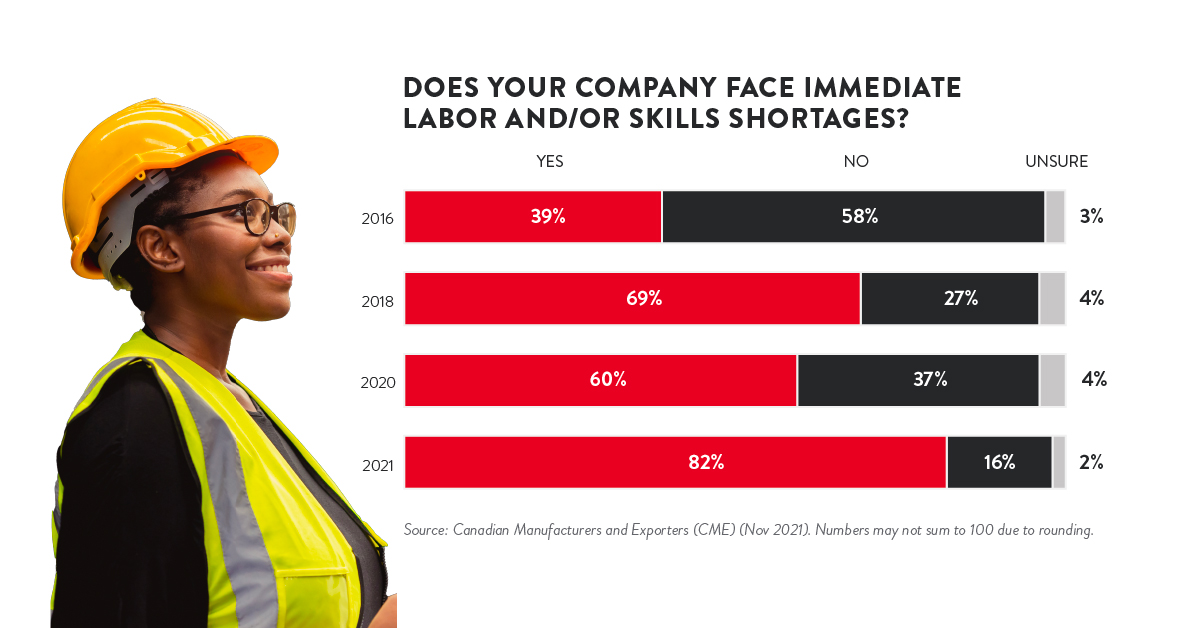3 Ways to Reduce Manufacturing’s Skills and Labor Shortage in Canada

3 Ways to Reduce the Manufacturing Labor Shortage in Canada
The skills and labor shortage in Canadian manufacturing has been a problem for some time, but it has recently gotten much worse. In 2021, 82% of manufacturers said they faced immediate shortages, up from 39% in 2016.
This graphic from Canadian Manufacturers & Exporters (CME) highlights the extent of the skills and labor shortage, and the steps that can be taken to address it.
A Closer Look At the Labor Shortage
There are more job vacancies than job seekers in manufacturing, for the first time since this data started being collected in 2015.
| Job Vacancies | Job Seekers | |
|---|---|---|
| 2015 Q1 | 37,420 | 78,400 |
| 2016 Q1 | 29,520 | 85,200 |
| 2017 Q1 | 36,255 | 79,700 |
| 2018 Q1 | 44,230 | 61,900 |
| 2019 Q1 | 50,535 | 61,500 |
| 2020 Q1 | 45,165 | 81,700 |
| 2021 Q1 | 56,690 | 120,900 |
| 2022 Q1 | 87,435 | 59,700 |
Labor shortages are most common in general labor and skilled production positions, such as welders and machinists. These shortages persist despite manufacturing jobs paying an average hourly wage of $23.45, well above the average minimum wage in Canada of $14.12.
Manufacturers’ bottom lines are being squeezed by these shortages: 42% have lost opportunities or paid penalties due to a lack of workers.
What can the government and manufacturers do to address the skills and labor shortage in Canada?
An Action Plan for the Skills and Labor Shortage
Canadian Manufacturers & Exporters (CME) recommends 3 main steps.
1. Increase Economic Class Immigrants
The Canadian government can nearly double the target for economic class immigrants from 240,500 in 2022 to CME’s recommended target of 500,000 per year.
As Canada’s population ages and its fertility rate remains low, immigrants are driving Canada’s labor force growth. From 2006-2021, the proportion of landed immigrants in the labor force increased by more than six percentage points.
| Landed Immigrants | Born in Canada | Other | |
|---|---|---|---|
| 2006 | 20.20% | 78.30% | 1.50% |
| 2011 | 21.10% | 77.20% | 1.70% |
| 2016 | 23.80% | 74.20% | 2.00% |
| 2021 | 26.90% | 70.30% | 2.80% |
“Other” category includes Canadian citizens born outside Canada and non-permanent residents.
In addition to increasing immigration, the government can update the definition of economic class “skills” to include a wider array of skills needed by employers. For their part, manufacturers can support immigrant workers with various programs like language training or mentorship.
2. Increase Employment of Youth and Under-represented Groups
Manufacturing has historically had a higher percentage of racial minority workers compared to the all-industry average. However, there are other population groups that manufacturers can tap into to address the skills and labor shortage.
For instance, women make up nearly half of the workforce but less than a third of all manufacturing workers. This level has remained relatively flat for decades.
Similarly, fewer young people have been choosing a career in manufacturing. The percentage of youth working in manufacturing is three times lower than it was in 1976.
| Year | Youth (age 15-24) in manufacturing as % of all youth employment |
|---|---|
| 1976 | 18% |
| 1986 | 13% |
| 1996 | 10% |
| 2006 | 8% |
| 2016 | 6% |
| 2021 | 6% |
The government can support employment of these groups by increasing the funding of inclusion programs and building awareness campaigns, like CME’s Women in Manufacturing initiative.
For example, one non-profit campaign aimed at youth highlighted how manufacturing involves creativity, leading technology, and building a better world. It had a measurable impact on changing teens’ perception of the sector:
- 10 percentage point increase in youth perceiving the industry as interesting and accessible
- 20 percentage point increase in teens agreeing they could see themselves working in the sector
The campaign also appealed proportionately to men and women, an impressive accomplishment given that women are underrepresented in the industry.
3. Invest in Automation and Advanced Manufacturing Technologies
Capital investment in things like machinery, equipment and software is strongly correlated with higher productivity. Unfortunately, Canada has seen one of the lowest levels of capital investment and productivity growth in manufacturing, harming its global competitiveness.
While some manufacturers have responded to the intense labor shortage by investing in automation, many have not. In fact, only 55% of manufacturers plan to invest in advanced technologies by 2023.
What are the top obstacles holding them back?
| Reason | % of Respondents |
|---|---|
| Costs too much | 62% |
| Not convinced of economic benefit | 52% |
| Lack sufficient financial/tax incentives | 52% |
| Lack the skilled workers to make the most of technologies | 49% |
In order to help manufacturers invest in automation and expand their capacity, governments can:
- Implement an investment tax credit to provide financial support.
- Develop awareness campaigns on the benefits of technology adoption.
- Provide financial support for training programs.
- Work with schools to ensure curriculum matches manufacturers’ needs.
This assistance will be critical in encouraging manufacturers to adopt advanced technologies.
Building a Productive Workforce
Government and manufacturers can work together to address the skills and labor shortage in Canada. Through a combination of expanding the labor pool and investing in automation, manufacturers will be better positioned to build capacity and grow.

-
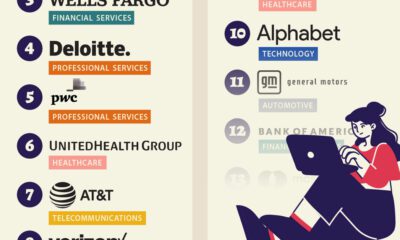
 Jobs1 week ago
Jobs1 week agoThe Best U.S. Companies to Work for According to LinkedIn
We visualized the results of a LinkedIn study on the best U.S. companies to work for in 2024.
-

 Economy1 month ago
Economy1 month agoMapped: Unemployment Claims by State
This visual heatmap of unemployment claims by state highlights New York, California, and Alaska leading the country by a wide margin.
-
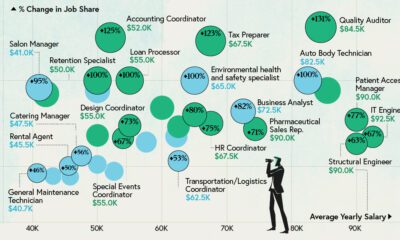
 Markets7 months ago
Markets7 months agoVisualizing the Most Sought-After Entry Level Jobs in 2023
Some jobs need a degree, while others don’t. Here are the top 20 most sought-after entry level jobs with and without a degree.
-
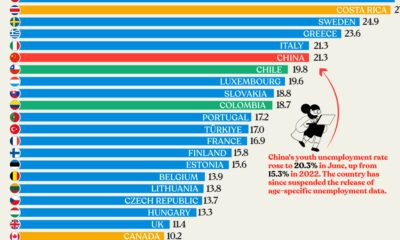
 Jobs8 months ago
Jobs8 months agoCharted: Youth Unemployment in the OECD and China
Nearly three years after COVID-19 first hit, youth unemployment in some countries, like China, has risen sharply.
-
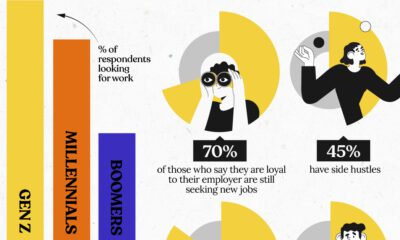
 Jobs9 months ago
Jobs9 months agoCharted: Gen Z Job Attitudes Compared with Other Generations
Gen Z job seekers are far more active than older generations, consistently looking for new work while already employed.
-

 Jobs9 months ago
Jobs9 months agoMapped: Unemployed Workers vs. Job Openings, by U.S. State
On average, there are 75 workers available for every 100 job openings across the country. Here’s how it varies by state.


